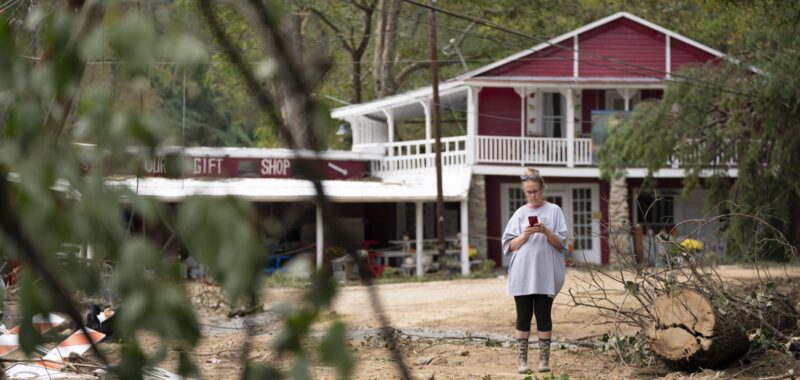The Federal Communications Commission gave Starlink and T-Mobile emergency authority to provide satellite-to-phone coverage in areas hit by Hurricane Helene.
“SpaceX and T-Mobile have been given emergency special temporary authority by the FCC to enable Starlink satellites with direct-to-cell capability to provide coverage for cell phones in the affected areas of Hurricane Helene,” SpaceX said yesterday. “The satellites have already been enabled and started broadcasting emergency alerts to cell phones on all networks in North Carolina. In addition, we may test basic texting (SMS) capabilities for most cell phones on the T-Mobile network in North Carolina.”
SpaceX warned of limits since the service isn’t ready for a commercial rollout. “SpaceX’s direct-to-cell constellation has not been fully deployed, so all services will be delivered on a best-effort basis,” the company said.
Starlink is being used to provide wireless emergency alerts to cell phones from all carriers in North Carolina, according to Ben Longmier, senior director of satellite engineering for SpaceX. “We are also closely monitoring Hurricane Milton and standing by ready to take action in Florida,” he wrote.
Temporary spectrum authority
The FCC also said that it is granting “special temporary authorities to licensees and issuing rule waivers to help communications providers maintain and restore service, support emergency operations, and assist public safety, including search and rescue efforts.” Separately, the FCC last week waived certain Lifeline program eligibility rules to help people in disaster areas apply for discounted phone and broadband service.
SpaceX began launching satellites with direct-to-cell capabilities in January 2024 and showed a demo of text messages sent between T-Mobile phones via one of Starlink’s low-Earth orbit satellites. T-Mobile has said the Starlink service for phones will help cover gaps in areas where it has no coverage “due to terrain limitations, land-use restrictions,” and other factors.

